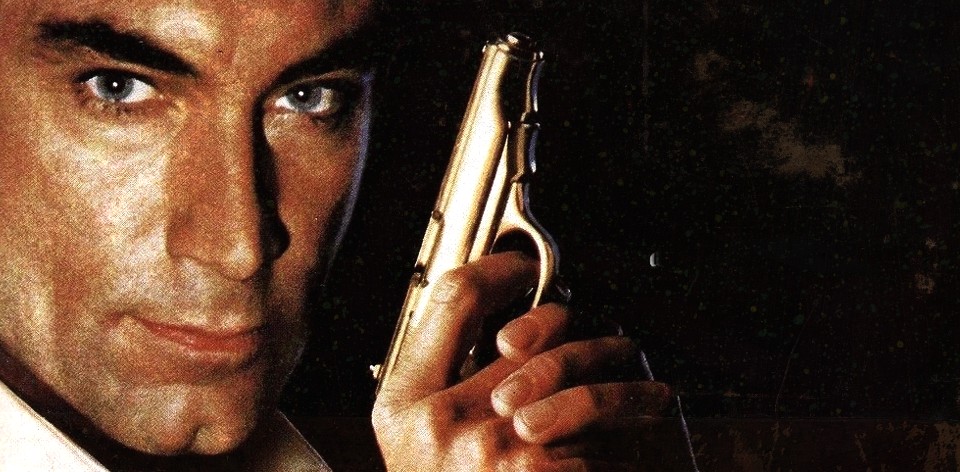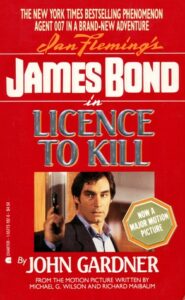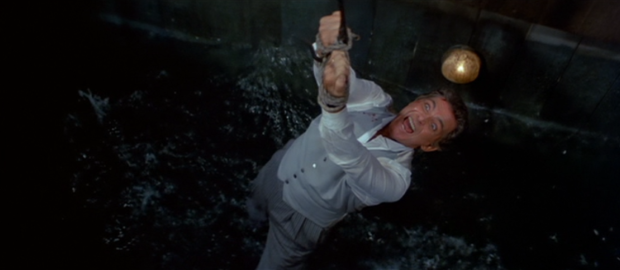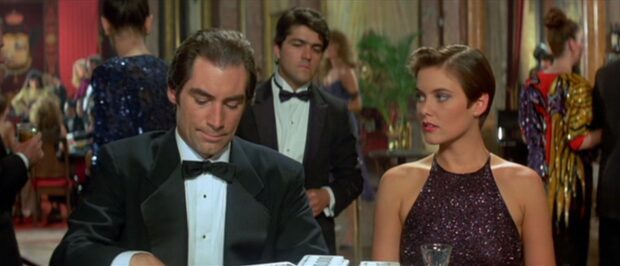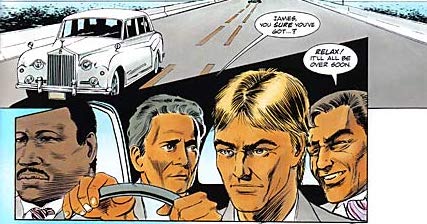Bond. James Bond. Join me as I read all of the James Bond books in 007 Case Files, encompassing Ian Fleming and beyond. For Your Eyes Only: there’s spoilers ahead.
LICENCE TO KILL was the sixteenth James Bond film in the Eon Productions series, but the first not to use one of the titles from Fleming’s books. The departures didn’t end there. Timothy Dalton’s second (and last) outing as 007 was part of a trend towards a grittier spy thriller, which was a perfect match for the increasingly violent John Gardner novels of the official book series.
Based on the script by Michael G. Wilson and Richard Maibaum, if you’ve seen the film, then the plot is almost identical. Bond is suspended from MI6 when he sets out in pursuit of Franz Sanchez (portrayed by Robert Davi on screen), the drug lord responsible for an attack on Felix Leiter’s wedding. With the bride dead and Leiter severely wounded, Bond teams up with Pam Bouvier (played in the film by Carey Lowell), a pilot and DEA informant, to get his man.
Gardner’s ninth Bond novel is something of an anomaly, being both a novelisation of the film and a continuation of his existing work. As such, it immediately runs into a few problems. In Fleming’s original Live and Let Die, Leiter loses several limbs when he is lowered into a waters filled with live sharks. The film universe didn’t use this plot point until director John Glen’s LICENCE TO KILL.
This means that the novelisation takes place in an alternate reality, largely regarded as occuring sometime prior to earning a Captain’s rank in Win, Lose or Die. Pulling in elements from Akira Kurosawa’s Yojimbo and Fleming’s short story The Hildebrand Rarity — such as the villainous Krest and his stingrays — it also means poor Felix is canonically attacked for a second time by sharks. We’ve heard of being once bitten twice shy, but talk about disagreeing with things that can’t stop eating him.
There’s other oddities too. In Gardner’s books, the Q Branch was headed up by Ann Reilly (reductively title Q’ute by the chauvinistic service). Yet a subplot in which Q turns up to provide aid as Bond’s ‘uncle’ is clearly based on Desmond Llewelyn’s portrayal of the ‘Major Boothroyd’ character. Gardner does a reasonable job of balancing the worlds, even if some of the quips are lighter in tone that his other novels.
Originally marketed as Licence Revoked, a combination of a title change and budgetary issues partially account for the film’s disappointing returns. Yet Gardner doesn’t have to worry about budgets or building sets, allowing him to blow up planes and bodies with impunity. Yes, the infamous supervillain torture device of a decompression chamber is in the book as well, and Gardner seems to delight in the sticky details of the literally mind-blowing scene.
Of course, Gardner’s presence doesn’t improve everything. It might be 1989, and Bouvier is one of the more consciously progressive female counterparts to Bond, but we’re still a long way from gender equity. Gardner never seemed to have got past his loving description of nipples, something he has in common with Christopher Wood (who coincidentally wrote the last novelisation in the series, James Bond and Moonraker). You wouldn’t know it from the film, or even the shooting script, but Gardner ensures we are aware that Talisa Soto as Lupe Lamora had “nipples erect as though the terror and violence aroused her.” At other times, Gardner just gets bogged down in his own prose. One woman is a “sight for eyes infected by the most severe conjunctivitis.” Most of us would have just said ‘sore eyes.’
There was another important adaptation of LICENCE TO KILL, a 44-page comic book version from writer and artist Mike Grell (Green Arrow: The Longbow Hunters). Unlike the book’s cover, you won’t find anybody looking like Dalton in Grell’s line art, as the actor declined to have his image licenced out. Grell would go on to do several James Bond comics, including Permission to Die. Like Gardner’s novel, it follows the plot fairly closely, but takes its own liberties given the the abbreviated length.
It would take another six novels and seven years before the novelisations would return with Gardner’s version of GoldenEye, while Raymond Benson would adapt the rest of the Pierce Brosnan scripts. It’s a tradition that’s sadly gone by the wayside in the Daniel Craig era. Still, if No Time to Die proved anything, it’s that no matter who plays Felix Leiter, he’s doomed.
James Bond will return…in Permission to Die.

